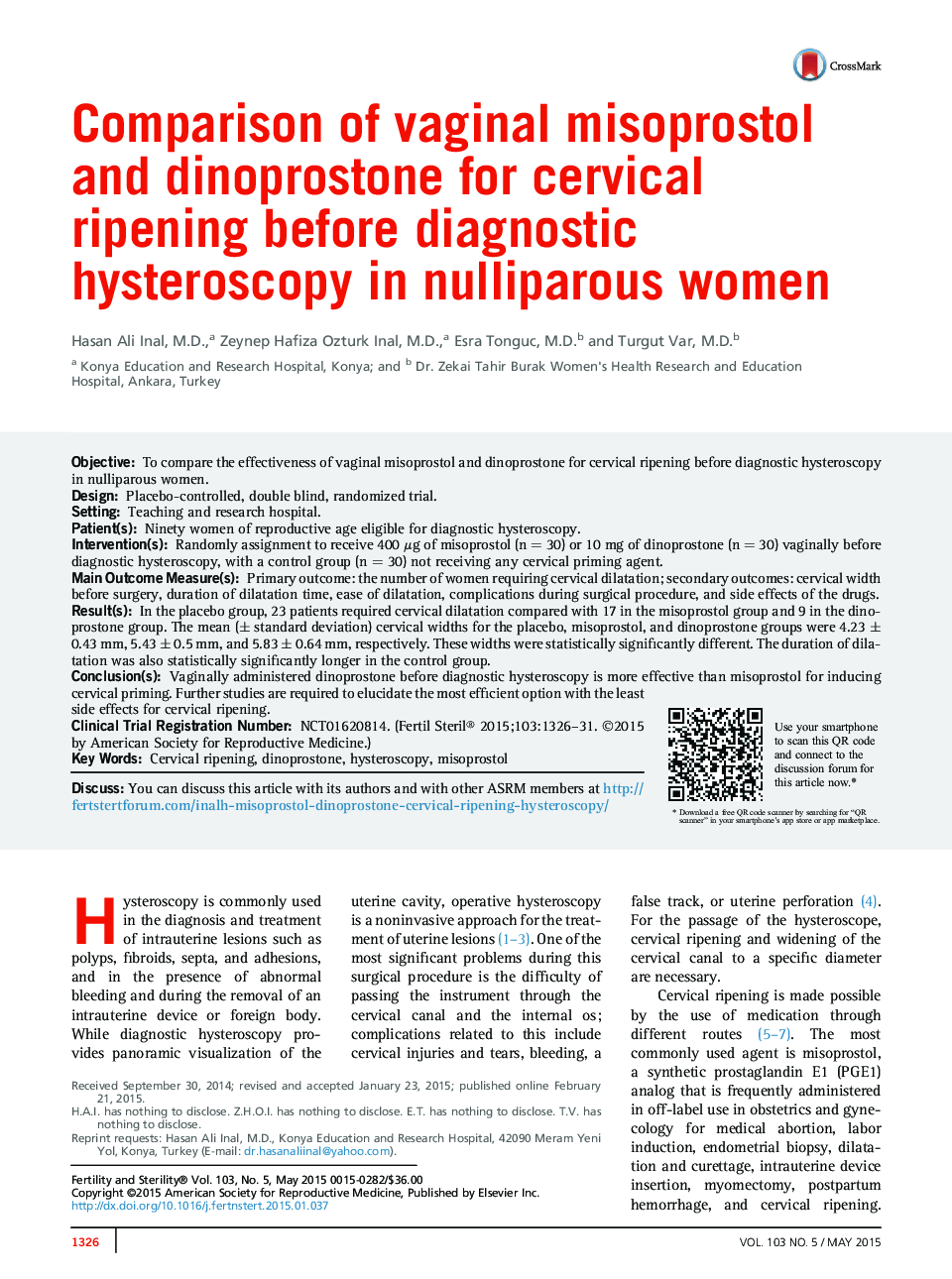| Article ID | Journal | Published Year | Pages | File Type |
|---|---|---|---|---|
| 3930852 | Fertility and Sterility | 2015 | 6 Pages |
ObjectiveTo compare the effectiveness of vaginal misoprostol and dinoprostone for cervical ripening before diagnostic hysteroscopy in nulliparous women.DesignPlacebo-controlled, double blind, randomized trial.SettingTeaching and research hospital.Patient(s)Ninety women of reproductive age eligible for diagnostic hysteroscopy.Intervention(s)Randomly assignment to receive 400 μg of misoprostol (n = 30) or 10 mg of dinoprostone (n = 30) vaginally before diagnostic hysteroscopy, with a control group (n = 30) not receiving any cervical priming agent.Main Outcome Measure(s)Primary outcome: the number of women requiring cervical dilatation; secondary outcomes: cervical width before surgery, duration of dilatation time, ease of dilatation, complications during surgical procedure, and side effects of the drugs.Result(s)In the placebo group, 23 patients required cervical dilatation compared with 17 in the misoprostol group and 9 in the dinoprostone group. The mean (± standard deviation) cervical widths for the placebo, misoprostol, and dinoprostone groups were 4.23 ± 0.43 mm, 5.43 ± 0.5 mm, and 5.83 ± 0.64 mm, respectively. These widths were statistically significantly different. The duration of dilatation was also statistically significantly longer in the control group.Conclusion(s)Vaginally administered dinoprostone before diagnostic hysteroscopy is more effective than misoprostol for inducing cervical priming. Further studies are required to elucidate the most efficient option with the least side effects for cervical ripening.Clinical Trial Registration NumberNCT01620814.
